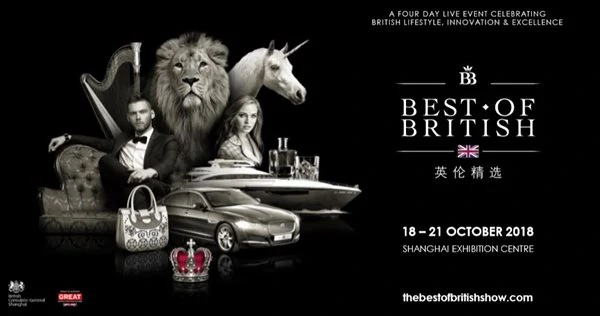Reuben Kaufman heads to The Best of British Fair to find out what brands are doing to attract Chinese customers
British brands took centre stage at the Best of British trade fair this October, a key event in the UK’s GREAT campaign to export its biggest names to China. At the heart of the opulent Shanghai Exhibition Centre, representatives from companies like McVities, Dyson and Costa Coffee flaunted their wares to scores of international visitors. With their Union Jacks and their complimentary goodies, the exhibitors demonstrated a remarkable knack for attracting punters to their stalls.
Nevertheless, Western businesses haven’t always been so adept in their efforts to market their brands in China. In the past, mistakes have been made not only with translations of advertising copy, but perhaps more critically, with localisation. Sometimes, though each word may be translated impeccably, a campaign fails to jibe with the Chinese market. And in the worst cases, this can spell disaster for a product’s chances of success.
Exhibit A: Nike’s woeful attempts to cash in on Chinese New Year in 2015. For the holidays, the fashion brand released a limited-edition pair of trainers that featured the characters 發 and 福 (“getting richer” and “fortune”) side-by-side, unaware that the combination now translated as “getting fatter”. The error earned the derision of Chinese fashionistas on social media, who rightly questioned whether the product was targeted at them at all. Compare this gaffe to that committed the same year by Burberry on a special-edition scarf: while the translation of the character 福 (“fortune”), was flawless, the brand failed to realise that it must be worn upside-down to act as the good-luck charm it traditionally represents. Whilst just last year, Airbnb unveiled its new Chinese name, 愛彼迎 (“Aibiying”) (“welcome each other with love”), as part of a major push to corner the market in holiday rentals; yet its re-branding has come under fire for sounding like the Chinese 爱饼 “aì bǐng”, meaning “love cake”, since it confuses the brand’s core message.
“Chinese shoppers are 61 percent more likely to buy a British product if it features a Union Jack on the packaging”
Evidently, there are plenty of potential pitfalls when it comes to localising a brand for the Chinese consumer. Mark Tanner, founder of marketing agency China Skinny, is particularly attuned to the challenges that eastward expansion may entail. First, the positives; “Britain has a very enviable brand in China, and has an incredible advantage,” he explains. Its associations with luxury and tradition are a powerful asset against international competition from established players like France, Germany and Italy.
“Heritage is very important, but businesses need to understand the target market, or the message can fail to resonate.” He cites the high-profile withdrawal of brands such as Marks and Spencer, B&Q and Tesco from the Chinese market, which all bear witness to a fatal misinterpretation of local demand, not to mention the difficulties of replicating British success stories abroad.
Back at Best of British, representatives from UK businesses are already mindful of this need to adapt to their new surroundings. Beyond the level of mere translation, Ben Maguire, Managing Director at distillery HMS Spirits, plans to take a particularly bold strategy to marketing his line of artisanal gins. “I’m going to play up the Britishness and the prestige,” he says. “Here, it’s 100 percent about prestige.” And what better way to convey prestige than to film your latest advertising campaign on a yacht?
Other entrepreneurs, such as Danielle Davies of natural cosmetics company, Oh My Skin, envisage an even more radical approach to taking on the market. For Davies, this means building a solid base of brand recognition even before her products find a distributor. “Without brand awareness, I could throw all my money into marketing and get sweet nothing,” she argues. To build this reputation, she plans to target Chinese consumers hoping to protect their skin against big city smog, a concern she believes is far less pressing on the British market.
How, then, can British brands more generally launch a successful campaign for the Chinese consumer? David Hampstead, CEO at B2B service provider, Samarkand Global, agrees that brand awareness is key. “There are loads of good British brands, especially heritage and high-quality brands,” he explains. “China is a huge opportunity, but also very competitive. And there’s more of a herd mentality [among consumers].” He cites the example of Harrods, a prestige store that has solidified its reputation amongst Chinese shoppers after years of welcoming tourists through its doors. Compare this with the findings of a study conducted by Barclays in late 2017, which claimed that Chinese consumers are 61 percent more likely to buy a British product if it features a Union Jack on the packaging, and a clearly-defined image of the nation begins to emerge. High tea, Downton Abbey and the royal family are all irresistible to the Chinese Anglophile; questionable attempts at co-opting Chinese tradition, understandably, are not.
So now you know: play up the prestige, understand your target audience, avoid pandering to Chinese stereotypes, and your brand may just be in with a chance of cracking the market. But ignore the importance of brand localisation, and the results could be as disastrous as they are comical.


